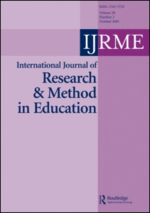Data gathering methods such as interview and video observation are employed a lot in research on teaching. Stimulated recall interview method (which is widely used at the University of Helsinki Department of Teacher Education, e.g. Toom 2006) combines video and interview so that when interviewing a teacher, a video of her/his lesson is displayed for closer focus on teacher’s actions during the teaching. However, there is a risk of concentrating too much on teacher and forgetting the most important aspect of all classroom activities – the student learning. Therefore, in addition to video-stimuli, another valuable cue for interview situation can be screenshots from the student desktops.
In a computer lab environment (as partly in my PhD project), some practical advices for data gathering with stimulated recall method were spotted:
- The video recording of the lesson gives a good overview of the classroom situations but does not necessarily highlight the students’ learning processes.
- Where students are using ICTs, there is special screenshot software (e.g. InstantShot! for Mac) for capturing all the events on the computer screens. However, integrating that data into the interview situation might need quite a lot of data processing on the computer before the data are in a sensible format for stimulated recall purposes.
- When the software that students are using, has a playback or recorder function as in CmapTools software, the process is very easy to recall by opening the file saved by the student and playing the recorded steps of the process. With the recorder function, both interviewer and interviewee can ‘play’, ‘pause’, or navigate to particular steps in the recording using the ‘back’ and ‘forward’ buttons.
- During the interview, the actual interplay between video and concept map recordings takes place as ‘diving’ into a student’s learning process. The concept map recordings are used to get closer to the student’s learning process when the student is on the video or the interviewed teacher is recalling something from the lesson related to that student.
>> An example of (fast forwarded) CmapTools playback of student’s concept map process.
Read more:
Vesterinen, O., Toom, A. & Patrikainen, S. (2010). The stimulated recall method and ICTs in research on the reasoning of teachers. International Journal of Research & Method in Education, 33(2), pp. 183–197.





